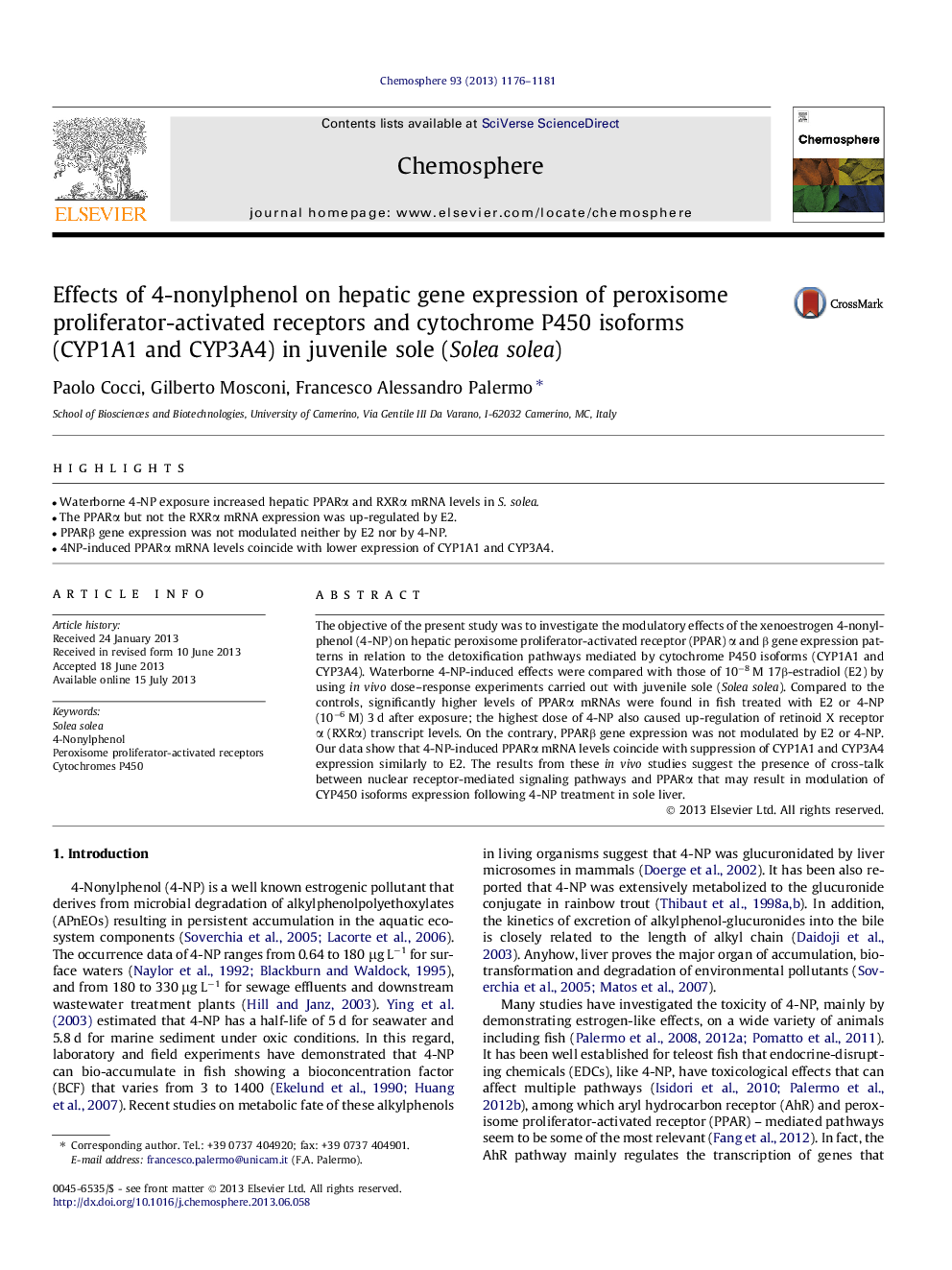| Article ID | Journal | Published Year | Pages | File Type |
|---|---|---|---|---|
| 6310362 | Chemosphere | 2013 | 6 Pages |
Abstract
The objective of the present study was to investigate the modulatory effects of the xenoestrogen 4-nonylphenol (4-NP) on hepatic peroxisome proliferator-activated receptor (PPAR) α and β gene expression patterns in relation to the detoxification pathways mediated by cytochrome P450 isoforms (CYP1A1 and CYP3A4). Waterborne 4-NP-induced effects were compared with those of 10â8 M 17β-estradiol (E2) by using in vivo dose-response experiments carried out with juvenile sole (Solea solea). Compared to the controls, significantly higher levels of PPARα mRNAs were found in fish treated with E2 or 4-NP (10â6 M) 3 d after exposure; the highest dose of 4-NP also caused up-regulation of retinoid X receptor α (RXRα) transcript levels. On the contrary, PPARβ gene expression was not modulated by E2 or 4-NP. Our data show that 4-NP-induced PPARα mRNA levels coincide with suppression of CYP1A1 and CYP3A4 expression similarly to E2. The results from these in vivo studies suggest the presence of cross-talk between nuclear receptor-mediated signaling pathways and PPARα that may result in modulation of CYP450 isoforms expression following 4-NP treatment in sole liver.
Related Topics
Life Sciences
Environmental Science
Environmental Chemistry
Authors
Paolo Cocci, Gilberto Mosconi, Francesco Alessandro Palermo,
